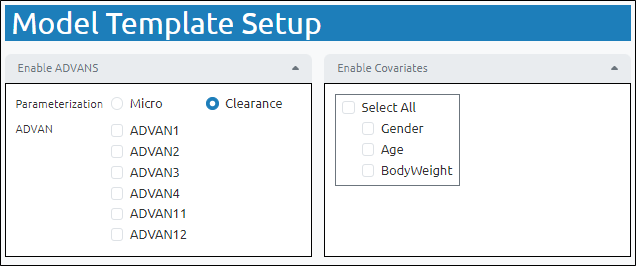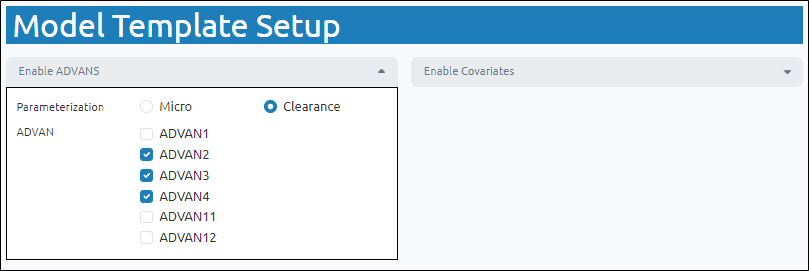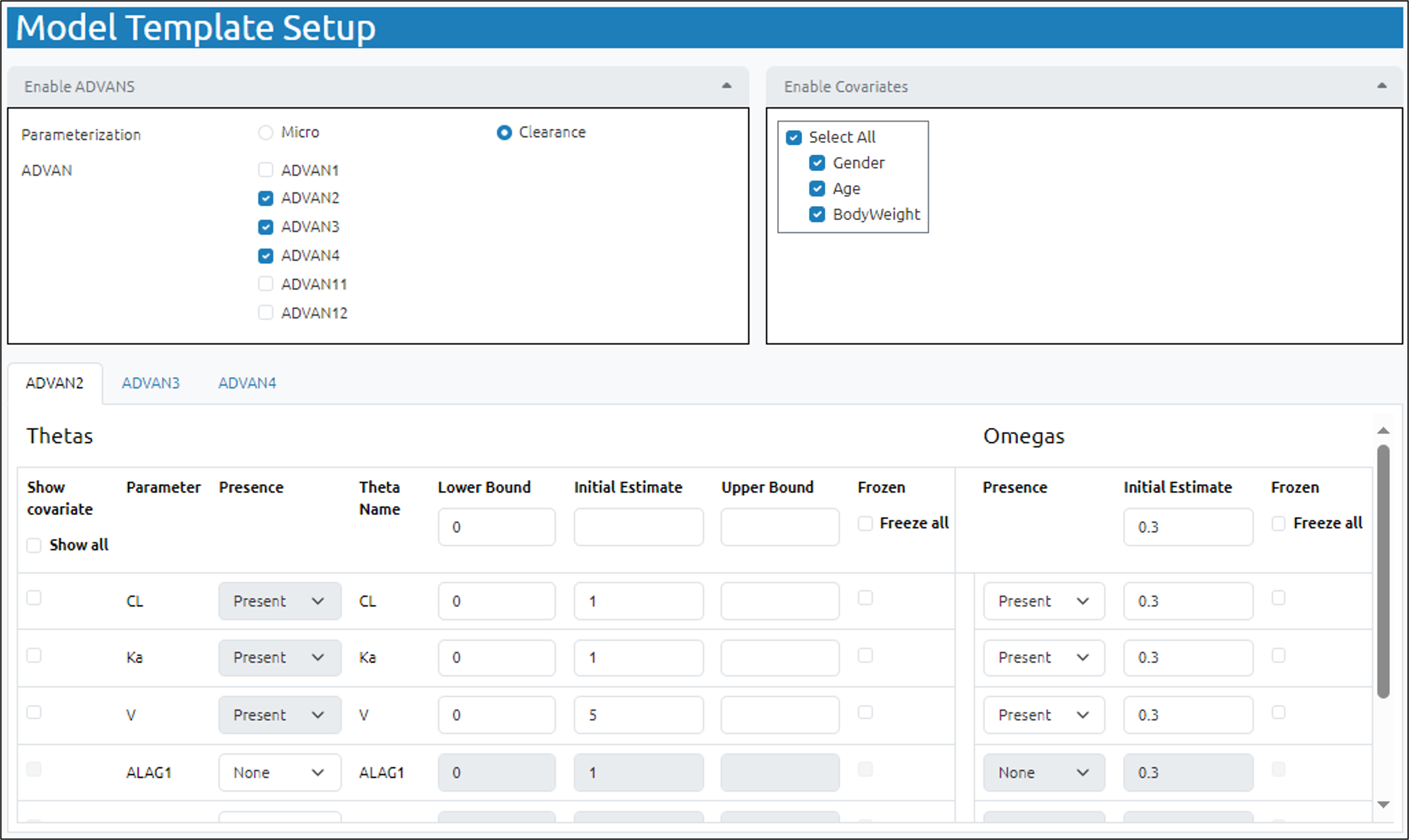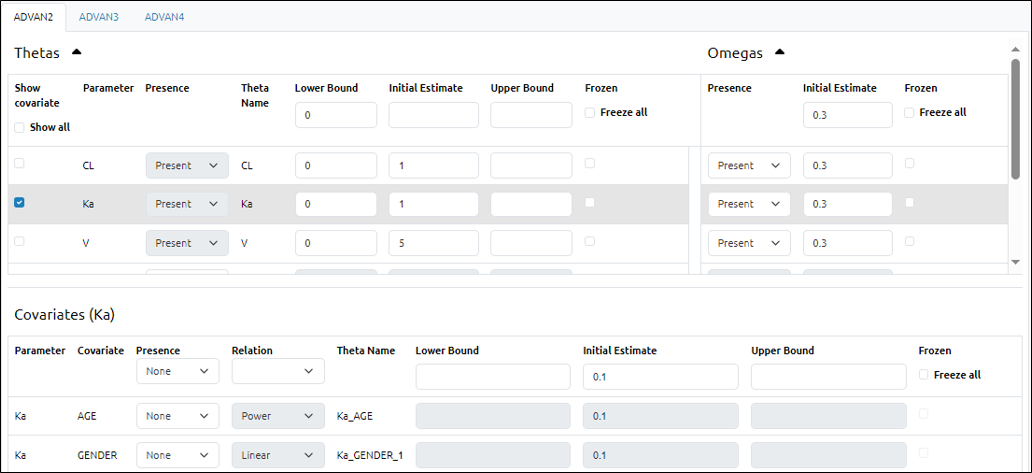Select the Model template link in the left list.

Note that clicking the “Enable ADVANS” or “Enable Covariates” header collapses and expands the lists.

Choose the type of parametrization: Micro or Clearance.
When Clearance is selected, ADVAN10 is removed from the ADVAN list.
Enable ADVANS
Check the boxes for any ADVANs to include in the search.
List of ADVANs:
ADVAN1 is a 1-compartment linear model
ADVAN2 is a 1-compartment linear model with first-order absorption
ADVAN3 is a 2-compartment linear model
ADVAN4 is a 2-compartment linear model with first-order absorption
ADVAN10 is 1-compartment model with Michaelis-Menten model elimination
ADVAN11 is a 3-compartment linear model
ADVAN12 is a 3-compartment linear model with first-order absorption
Each ADVAN with a checked box has a tab for specifying settings. Unchecking a box removes that ADVAN tab.

For each parameter on an ADVAN tab, set the parameter and its corresponding Omega Presence:
None — Absent in all candidates
Present – Present in all candidates
Searched – May or may not be present
Parameters that are required for the selected ADVAN are set automatically to Present.
Enter the value for the Lower Bound, Initial Estimate, and Upper Bound of Theta and the Initial estimate of Omega in the first row to apply the entered value to all parameters.
Or
Enter different values for individual parameters in the corresponding row.
Check the Freeze all box in the first row to apply fix values for all parameters.
Or
Fix the values for a particular parameter by checking the Frozen box in the parameter’s row.
Enable Covariates
In the Enable Covariates section at the top right section of the window, check the box to enable a covariate.
To define a dependency between a covariate and a parameter in an ADVAN:
Go to the tab for the ADVAN.
Check the Show covariate box in the parameter row.

In the Covariates section, for each covariate that was enabled, set the Presence:
None — Absent in all candidates
Present – Present in all candidates
Searched – May or may not be present
Note: Once the Covariates section is also visible, you can collapse the Thetas/Omegas section to clear up the display. Click the up arrow next to the Theta title or Omega title. (Expand the section again by clicking the down arrow next to either name.)
Select the Relationship of the covariate to the parameter. For the continuous covariate, choose from Exponential, Linear, or Power. For the categorical covariate, choose from Exponential or Linear.
Enter the value for the Lower Bound, Initial Estimate, and Upper Bound in the first row to apply the entered value to all covariates.
Or
Enter different values for individual covariates in the corresponding row.
Check the Freeze all box in the first row to freeze the values for all covariates.
Or
Fix the values for a particular covariate by checking the Frozen box in the covariate’s row.
The covariate Theta Name column is a concatenation of the parameter name, covariate name, and (for categorical covariates) the category value. Since NONMEM only supports letters, digits, or underscores (“_”) in theta covariate names, any non-valid symbols, such as a minus sign (“-”) or a period (“.”), found during the concatenation will be replaced with an underscore (“_”).